

CONTACT US
1052 Budapest, Jane Haining Quay, Dock 11.
Customer support is available daily from 9:00 to 22:00.
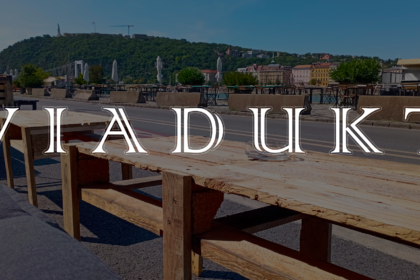
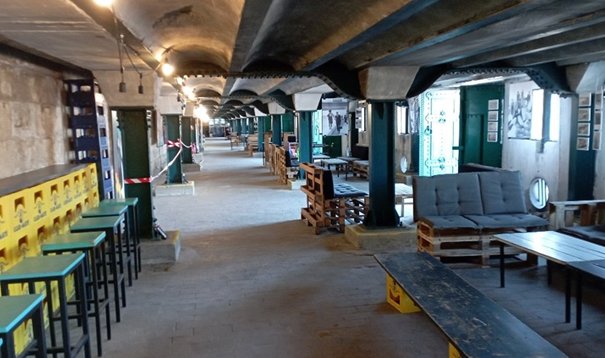
Photo: Silverline Cruises
It is not unusual nowadays to have bars and pubs in odd places. On the contrary! This feature became one of the main attractions of Budapest! Just think of the numerous ruin pubs in crumbling buildings or open-air cocktail lounges in vacant building lots. Now we want to tell you the success story of a similar establishment but 115 years earlier, the story of the Viadukt Restaurant.
Surviving the numerous tides of the Danube and located in a hard-to-reach spot at the banks of the Danube the Viadukt restaurant was still a hit! Although the World Wars ended the place, today as the Jane Haining Promenade is closed on the weekends during the summer months, there is an attempt to revive this establishment in a bit modern fashion. Firstly, we want to invite you on a “historical tram ride” and give you a little background on how this area developed over the years.

Photo: András Szántó’s collection Photo: Silverline Cruises
123 years ago, on October 20, 1900, the tram line on the Pest side was opened for traffic in Budapest. The development of the Budapest embankments began in 1853, following the consequences of the Great flood of 1838. The double-level retaining wall was completed between Margaret Bridge and Boráros Square by 1891, reaching a height of 10 meters with the parapet walls. The construction of the tram line (Tram nr. 2) on the Pest embankment started in 1896, The section between Boráros Square and Elizabeth Bridge was opened in 1897, followed by the segment between Elizabeth Bridge and the Academy, which was inaugurated on October 20, 1900. (Interestingly, even Elizabeth Bridge was still under construction at that time!) To preserve the untouched promenade, the line was led over the lower embankment on a 498-meter-long viaduct supported by three rows of riveted columns made of iron, hence the name “Viadukt” for the entire line. Under the iron structure, underpasses, stairways, and warehouses were built. Near the Great Market Hall, tunnels led along the embankment wall to huge warehouses under the hall, where the goods arriving on barges were stored. Stone parapets and cast-iron railings integrated with lamp posts separated the tracks from the promenade, which were designed by the most celebrated architect of Budapest, Miklós Ybl.
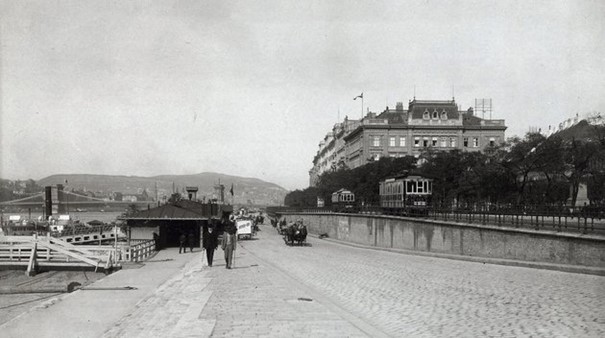
Photo: Fortepan
The constructions paved the way for a small, family-owned restaurant to be established. One of the warehouse sections was rented by Illés Csillag, who set up a restaurant in the space (see the image below). We assume there was access to water and electricity, but even so, it couldn’t have been a great pleasure to work in a windowless kitchen, although they allegedly served excellent food. According to one advertisement, they offered “Fresh fish soup and first-class drinks non-stop,” which meant the cook had to be on standby from the 3 AM opening until late at night, around 21-22 hours. Later, they even expected hungry and thirsty guests literally all night, which meant very long shifts for the staff. The reason for the continuous availability served two goals: firstly, the pub was located opposite the Vienna ship station, which had significant boat traffic and therefore, vivid passenger traffic. This not only included boats heading to Vienna but also to Vác, Esztergom, and Bratislava, which meant more frequent ship routes and a larger number of people to attract. So, they needed to serve large number of guests continuously.
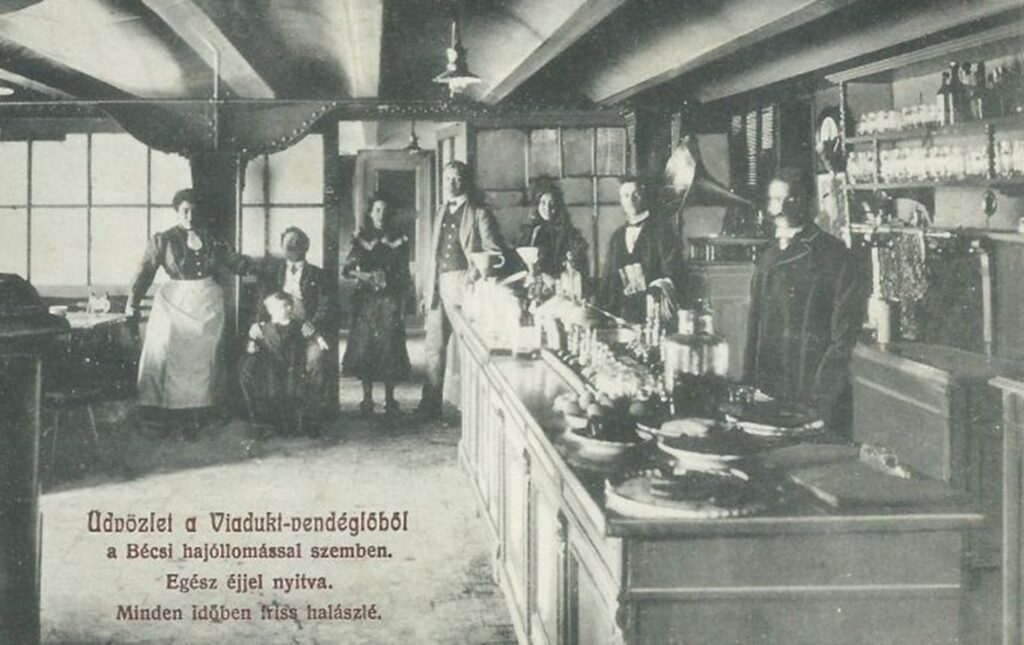
Photo: András Szántó’s collection
Catching a glimpse at the interior counter of the tavern, we suspect they had two types of draft beer and at least three types of bottled wine available. However, the most important thing which made them well-known was their delicious Fishermen Stew. This tasty dish attracted some of the wealthiest people in town as well to the humble establishment. In contemporary newspaper articles, the restaurant was often referred to and dubbed as the “sailor’s tavern” but it’s worth noting that in this same article, it becomes clear that the aristocratic audience also frequented this nighttime establishment.
The family business was booming, in addition the owner, Illés Csillag was also well-known at that time for his “elixir” the so called “Próféta” (prophet) a Jägermeister-like distilled herbal essence which was served as an aperitif and said to have medicinal properties. We do not have historical records on how effective this draught was, but clearly it could have tangible results as the beverage brought enough revenue for him to establish the Viadukt Restaurant.
The restaurant also had its fair share of stories and anecdotes as well. Once a murderer was cornered and caught at the restaurant, not to mention the story of the street cleaner who stabbed the bartender, who refused to serve him more wine. The funny part of this story was that the culprit’s name was also Illés Csillag, like the owner of the establishment. This created a weird controversy and earned somewhat of an ill repute for the place. Nevertheless, the rough demeanour of the dock workers and the potential “danger” was part of the charm which also attracted the elite as well as the everyday folks.
Sadly the success of this enterprise came to a halt due to the 1st World War. The owner died on the battlefields as a soldier in 1917. Even though the restaurant was still around in the 1920’s it could not survive the ensuing economic crisis between the two World Wars. In addition, the shape of the whole promenade changed drastically during the socialist era, which made it nearly impossible to run a business at this location.
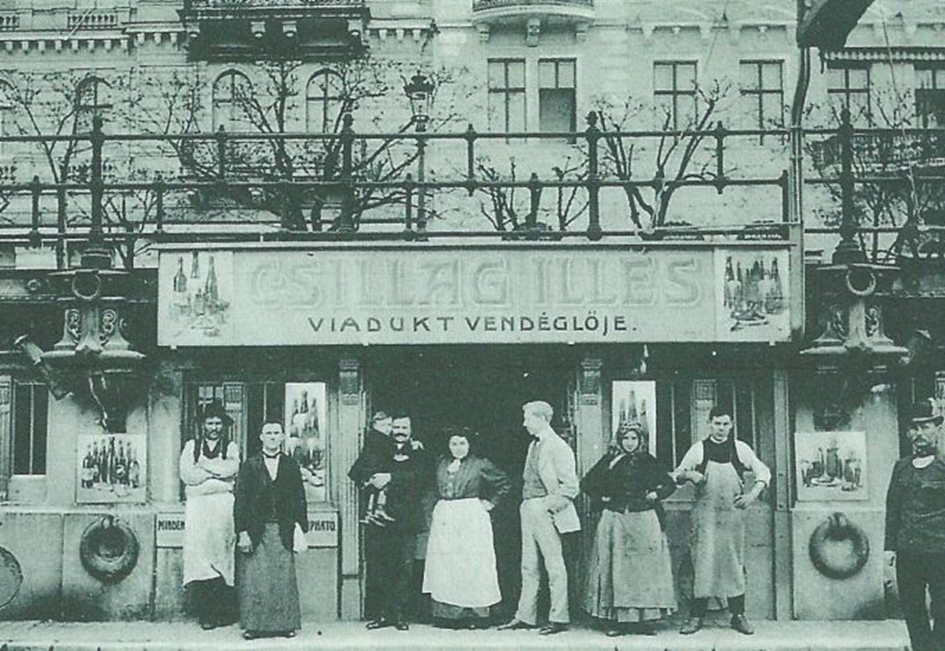
Photo: András Szántó’s collection
But now 115 years later, there is a spark to reignite this once forgotten establishment…
Due to the reforms of the current mayor of Budapest, the Promenade once again got its charm back. At least for the weekends, that is! From Mid-April until October cars are not allowed to drive near the docks. This act gives opportunity to many temporary instalments, catering facilities and programmes to flourish: Bars, cafés, sandboxes, benches, free yoga classes, and space for joggers and bicyclists many more. In addition, not many city folk knew what is hidden it the miles long, locked-down warehouses under the tram tracks.
One of the establishments operating in these warehouses was the Viadukt restaurant, which has reopened its gates as alternate pub/ café on the 1st of July. Let’s all welcome the Viadukt Terasz! Today the reopened storage cellar, similarly, named as Viadukt (Terasz), with its riveted iron beamed ceiling gives home to farmers markets, cultural programmes, art exhibitions. Especially on the weekends, the long derelict and almost forgotten chambers of this warehouse are filled with buzzing life once again. We hope that it will be a permanent facility to visit all year round.
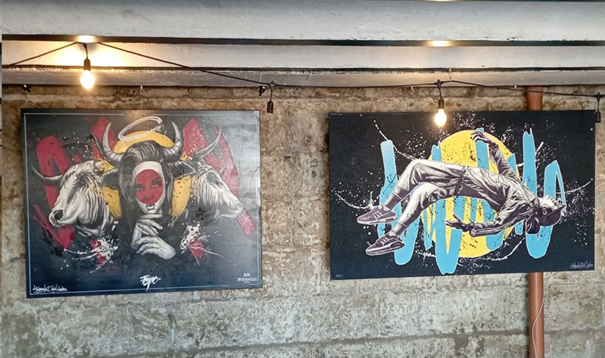
Photo: Silverline Cruises
Be sure to visit the Jane Haining docks this summer! Additionally, instead of closing it off for weekends only, from 15th July until 15th August the whole area becomes accessible only for pedestrians. Also, if you have discovered the entire Jane Haining promenade be sure to check out Dock 11. Where the marry crew of Silverline Cruises will greet you! Check out our regular cruises and special programmes! Plan your day effectively, and after exploring the wonderful Danube promenade be sure to cruise with us to unveil the rest of Budapest onboard!
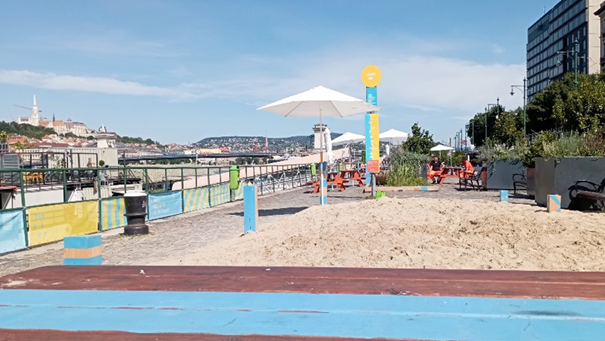
Photo: Silverline Cruises
Last but not least, check out this link to get the vibe of the Promenade!
https://www.facebook.com/watch/?v=595120909444854